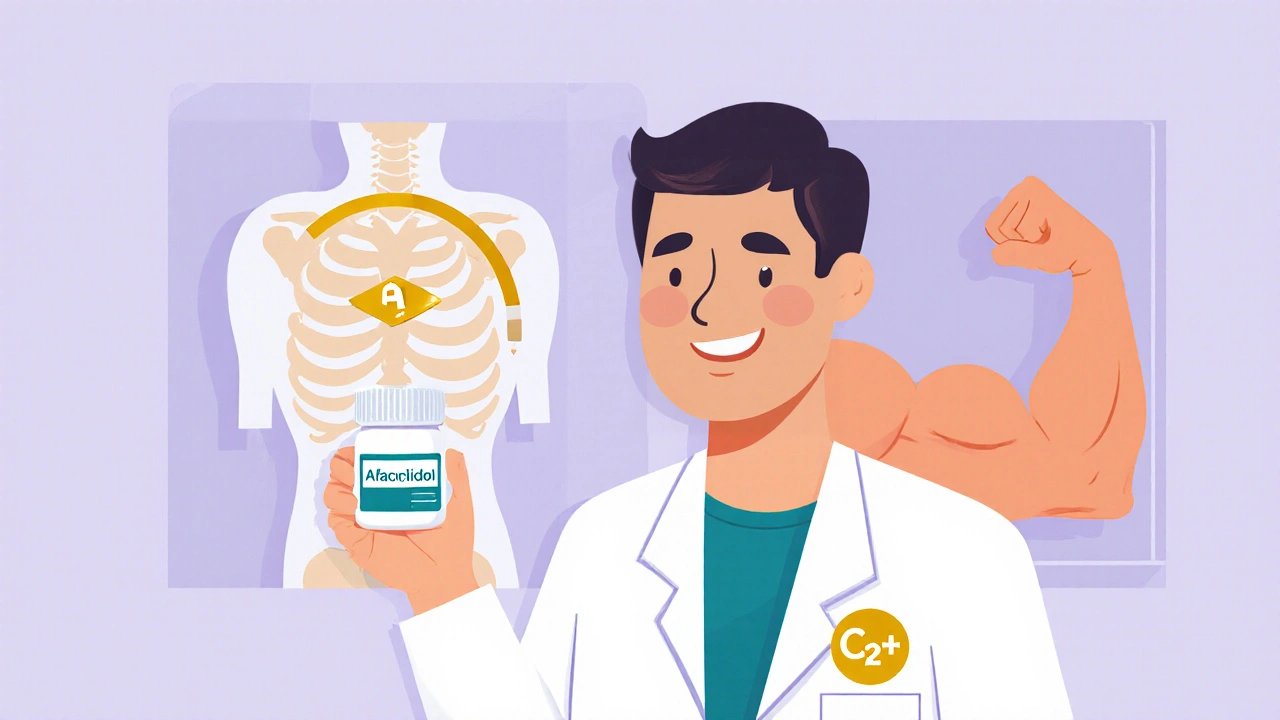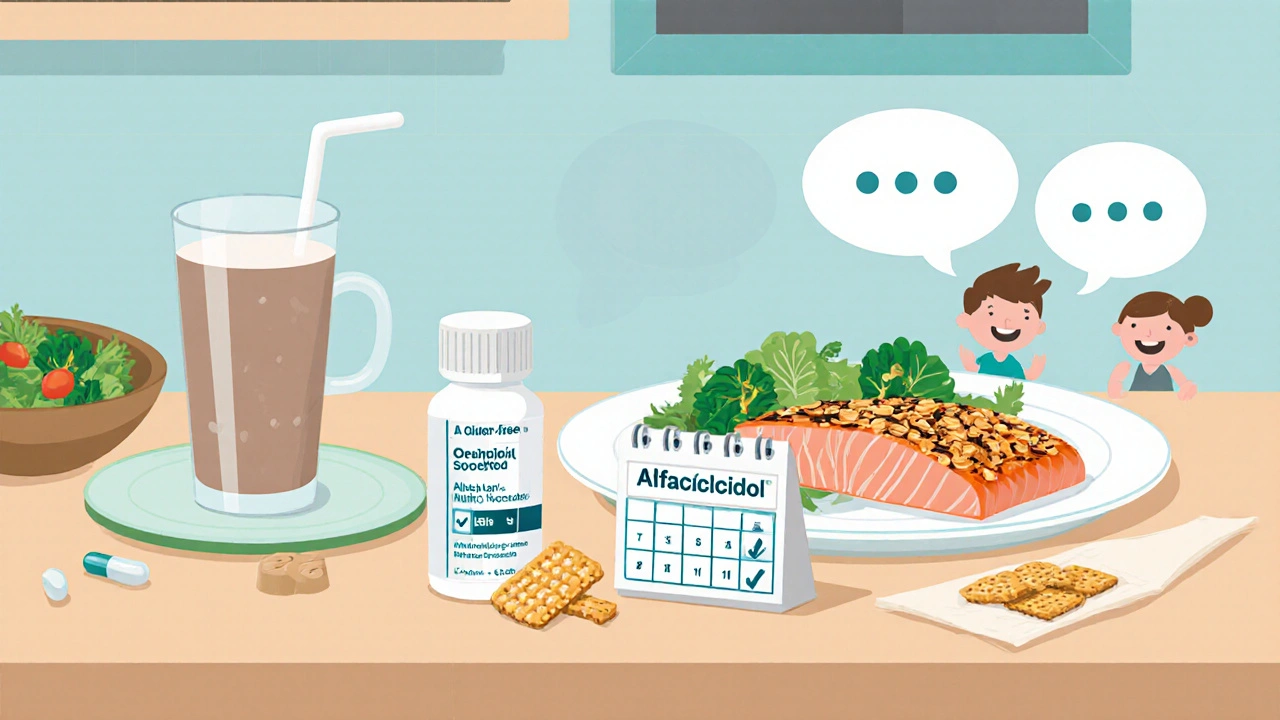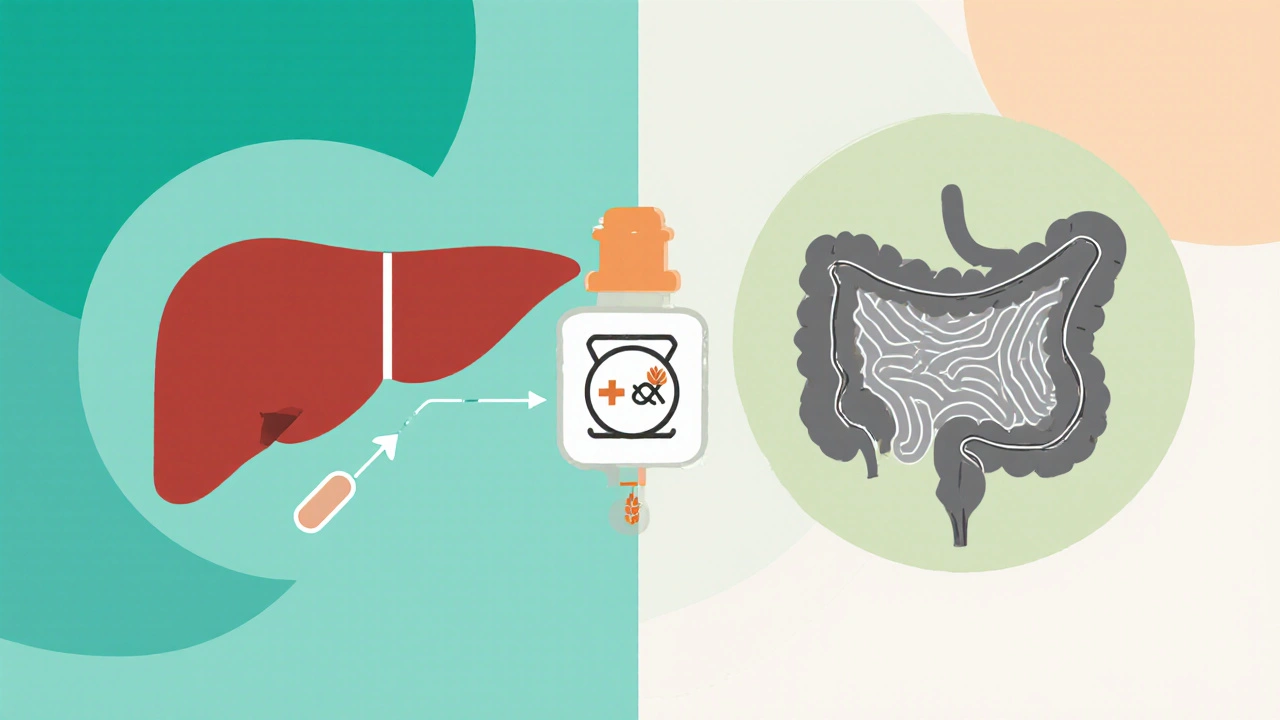What Is Alfacalcidol?
Alfacalcidol, chemically known as 1‑alpha‑hydroxyvitamin D3, is a synthetic analog of vitamin D that the liver converts directly into the active hormone calcitriol. Because it bypasses the kidney’s 1‑α‑hydroxylation step, it works even when kidney function is compromised. It’s commonly prescribed for conditions that need a reliable boost in calcium and phosphate balance, such as osteoporosis and renal osteodystrophy.
How Celiac Disease Disrupts Vitamin D Metabolism
Celiac disease is an autoimmune disorder triggered by gluten ingestion. The immune attack damages the lining of the small intestine, flattening the villi that absorb nutrients. When those tiny finger‑like projections shrink, the body struggles to soak up fat‑soluble vitamins, especially vitamin D.
Low vitamin D levels lead to poor calcium absorption, weaker bones, and a higher risk of fractures. In celiac patients, this deficiency can be more severe because the damaged gut often fails to absorb the vitamin from food or standard supplements.
Why Alfacalcidol Works Better Than Regular Vitamin D for Celiac Patients
Standard vitamin D supplements (either D2 ergocalciferol or D3 cholecalciferol) require two activation steps: first in the liver, then in the kidneys. If the kidneys are sluggish or if the patient has other metabolic issues, the final active form may not reach therapeutic levels.
Alfacalcidol’s shortcut-direct conversion in the liver-means it sidesteps the renal bottleneck. This makes it especially useful for celiac patients who may have secondary kidney stress due to chronic inflammation or who simply need a more predictable rise in circulating calcitriol.
The standout benefit of Alfacalcidol for celiac patients is its ability to raise calcium absorption without relying on the kidney’s conversion capacity.

Key Benefits for Celiac Patients
- Improved Calcium Absorption: By providing the active form of vitamin D, alfacalcidol enhances intestinal calcium uptake even when the gut is partially compromised.
- Bone Mineral Density (BMD) Support: Studies show that alfacalcidol can increase BMD by up to 5 % in six months for patients with low vitamin D and ongoing malabsorption.
- Reduced Risk of Osteoporosis: Celiac patients face a two‑to‑three‑fold higher osteoporosis risk; alfacalcidol mitigates this by normalizing calcium‑phosphate balance.
- Better Muscle Function: Adequate vitamin D improves muscle strength, lowering the chance of falls-an important factor for older celiac patients.
- Less Need for High‑Dose Vitamin D: Because alfacalcidol is already active, clinicians can prescribe lower milligram doses, reducing the chance of hypercalcemia.
Dosage and Safety Considerations
Typical dosing for adults with celiac‑related deficiency starts at 0.5 µg daily, titrated up to 1 µg based on serum calcium and 25‑OH‑vitamin D levels. Blood tests should be taken before starting therapy and then every 8‑12 weeks during the first six months.
Key safety checkpoints:
- Serum Calcium: Keep below 10.5 mg/dL. If it spikes, the dose is lowered.
- Phosphate Levels: Watch for hyperphosphatemia, especially in patients on phosphate binders.
- Kidney Function: Although alfacalcidol bypasses renal activation, impaired kidneys still affect calcium excretion.
Common side effects are mild-headache, nausea, or transient hypercalcemia. Severe reactions are rare but require immediate medical attention.
Integrating Alfacalcidol Into a Gluten‑Free Lifestyle
Alfacalcidol comes in tablet form, often packaged as a gluten‑free product. When choosing an online pharmacy, verify the label for "gluten‑free" certification to avoid accidental exposure.
Pair the supplement with a balanced gluten‑free diet rich in calcium sources like fortified plant milks, leafy greens, and almonds. Here’s a quick snapshot of a day’s meals that support the therapy:
- Breakfast: Fortified oat milk smoothie with banana and chia seeds.
- Lunch: Quinoa salad with kale, roasted chickpeas, and a tahini dressing.
- Dinner: Grilled salmon, sweet potato, and steamed broccoli.
- Snack: Almond butter on rice crackers.
Staying consistent with both the supplement and diet maximizes the bone‑protective benefits.

Comparison Table: Alfacalcidol vs. Standard Vitamin D Supplements
| Attribute | Alfacalcidol | Vitamin D3 (cholecalciferol) |
|---|---|---|
| Activation Pathway | One‑step (liver) → active calcitriol | Two‑step (liver → kidney) → active calcitriol |
| Typical Dose (adults) | 0.5‑1 µg daily | 800‑2000 IU daily |
| Effectiveness in Malabsorption | High - bypasses renal conversion | Variable - depends on kidney function |
| Risk of Hypercalcemia | Low to moderate (dose‑adjusted) | Higher with excess dosing |
| Gluten‑Free Availability | Commonly labeled gluten‑free | Often gluten‑free but check carrier |
Common Questions About Alfacalcidol and Celiac Disease
Can I take alfacalcidol without a prescription?
No. Alfacalcidol is a prescription‑only medication in most countries, including Australia. Your doctor will need to assess your blood work before starting therapy.
How quickly will I see improvements in bone density?
Bone mineral density changes are gradual. Most clinical trials report measurable gains after 6‑12 months of consistent dosing combined with a gluten‑free diet.
Is alfacalcidol safe for children with celiac disease?
Pediatric use is possible but requires lower dosing and tighter monitoring. Pediatric endocrinologists usually start at 0.25 µg daily and adjust based on calcium levels.
What should I do if I experience symptoms of high calcium?
Stop the supplement immediately and contact your healthcare provider. Common signs include nausea, excessive thirst, and muscle weakness. Blood tests will confirm if calcium is elevated.
Can alfacalcidol replace my regular vitamin D supplement?
If your doctor prescribes alfacalcidol, they will typically discontinue other vitamin D products to avoid excess dosing.
Bottom Line
For anyone living with celiac disease, ensuring adequate vitamin D is a constant challenge. Alfacalcidol’s active‑form advantage, combined with careful dosing, offers a reliable way to protect bone health, reduce fracture risk, and support overall mineral balance. Pair it with a strict gluten‑free diet, regular monitoring, and a trusted online pharmacy, and you’ll be on solid ground-literally and figuratively.


Post A Comment